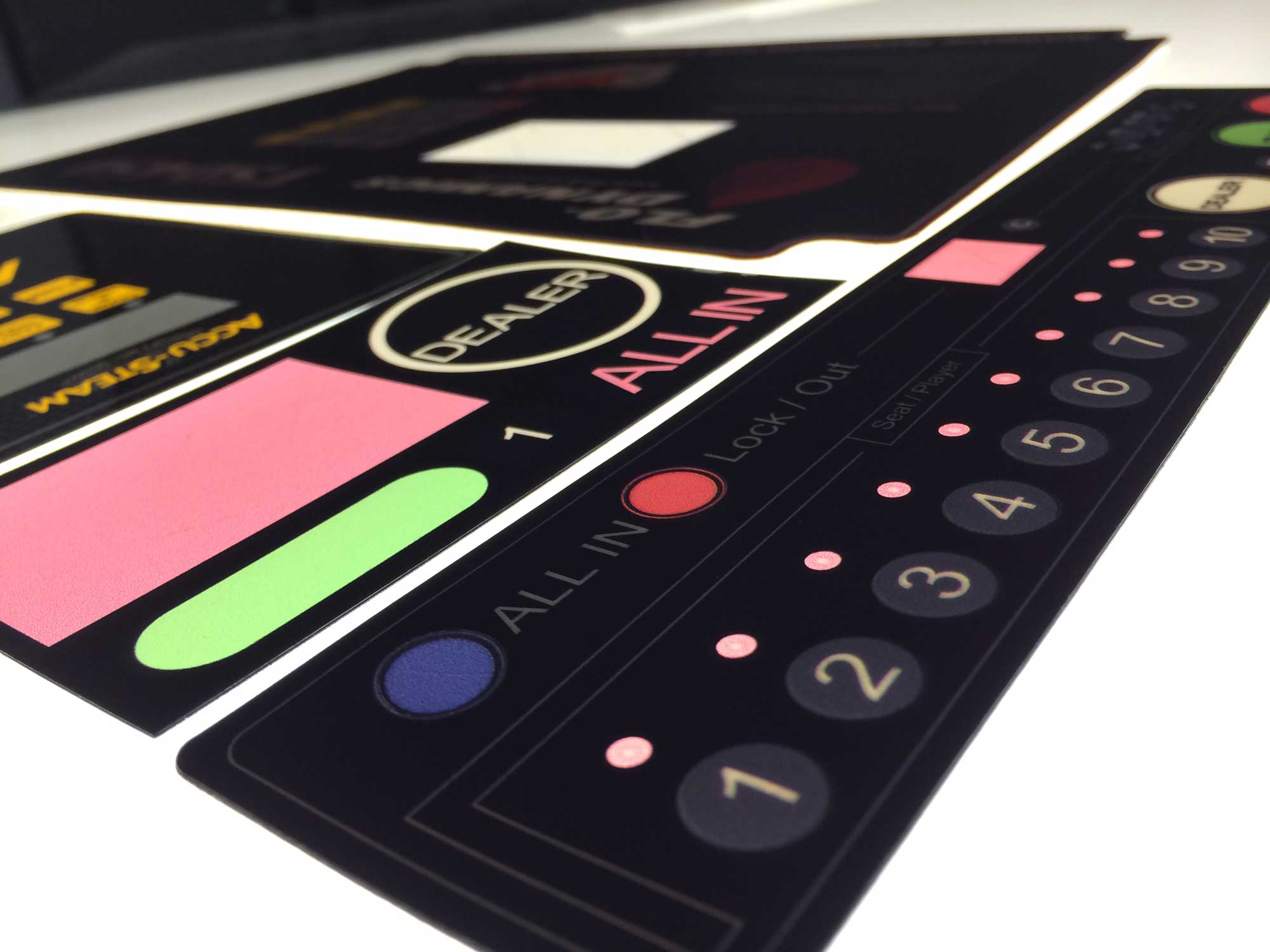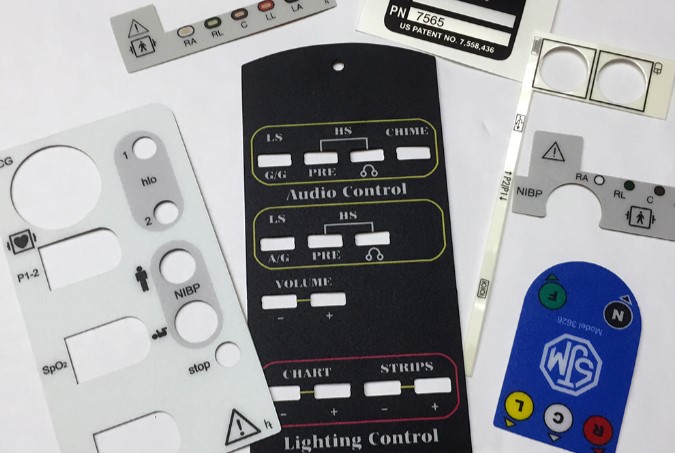The Production Steps Behind Durable Graphic Overlays Detailed
The Production Steps Behind Durable Graphic Overlays Detailed
Blog Article
Comprehending How Graphic Overlays Work to Improve Your Innovative Projects
Graphic overlays serve as a crucial part in the realm of creative tasks, improving both visual communication and audience interaction. The effective combination of these overlays calls for mindful consideration of layout principles and purposes.
What Are Graphic Overlays?
Graphic overlays are aesthetic elements that are placed on top of a base picture or user interface to enhance communication and customer experience. They offer different functions, consisting of providing added information, guiding customer communication, and enhancing aesthetic allure. Usual applications of visuals overlays can be located in electronic user interfaces, marketing, and educational products.

Graphic overlays are typically created making use of design software program, permitting developers to manipulate transparency, dimension, and shade to attain the wanted effect. They can be vibrant or static, with animations that draw the viewer's eye and enhance interaction. The critical usage of graphic overlays not just boosts aesthetic pecking order however additionally help in delivering a clear and systematic message. Recognizing just how to properly apply graphic overlays is vital for designers intending to boost their creative tasks.

Advantages of Making Use Of Graphic Overlays
Making use of graphic overlays can significantly improve the efficiency of aesthetic communication throughout different mediums. Among the primary benefits is the ability to share intricate info succinctly. By layering graphics, text, and photos, overlays promote the discussion of information in a more absorbable format, making it simpler for target markets to comprehend key concepts rapidly.
Furthermore, graphic overlays can increase aesthetic charm, drawing attention to details components within a layout. This is particularly advantageous in advertising and marketing and advertising and marketing, where capturing the customer's rate of interest is paramount. The calculated usage of colors, shapes, and typography in overlays can produce a cohesive and interesting visual narrative, enhancing brand name recognition.
Additionally, graphic overlays provide versatility in design. They allow designers to adapt material for different platforms without beginning from scrape, making certain consistency across numerous networks. This adaptability is essential in today's digital landscape, where material must be maximized for varied devices and styles.
Types of Graphic Overlays
When taking into consideration the numerous sorts of visuals overlays, it is important to acknowledge their varied applications throughout different sectors. Graphic overlays can be categorized mostly right into three kinds: functional, attractive, and informational.
Practical overlays are developed to improve the usability of a product. Typically discovered in digital tools, these overlays frequently offer tactile feedback with increased buttons or distinctive surfaces, boosting customer communication. They can also function as a safety layer, protecting the underlying Find Out More parts from deterioration.
Attractive overlays focus on visual improvement, enabling brand names to reveal their identity through vivid styles and custom-made graphics. These overlays are widespread in packaging, advertising and marketing, and point-of-sale products, where aesthetic charm is crucial for drawing in consumers.
Informational overlays, on the other hand, are used to communicate important data or instructions. They can be seen in applications such as signs, customer guidebooks, and educational graphics, where clarity and readability are critical.
Each kind of visuals overlay offers a distinct objective, adding to the general efficiency of innovative tasks while resolving details demands within various industries. Recognizing these differences is vital for choosing the appropriate overlay for your task.
Best Practices for Implementation
To make certain the successful implementation of visuals overlays, it is vital to develop a clear understanding of the task's purposes and the specific needs of the end-users. Begin by carrying out detailed research to identify the target market and their choices, as this will certainly educate style selections and functionality.
Next, develop an in-depth strategy that details the overlay's purpose, combination, and format process. This plan must include interface considerations, ensuring that overlays improve instead of obstruct the customer experience - Graphic Overlays. Maintain and think about the visual power structure consistency in design components, such as shade symbols, fonts, and plans, to promote brand comprehensibility
Evaluating is important; gather comments from a here depictive example of individuals to identify prospective problems and areas for enhancement. Repeat on the layout based on user input and efficiency data. Furthermore, guarantee compatibility across numerous gadgets and platforms to make best use of availability.
Tools for Producing Overlays
Developing effective graphic overlays requires the right devices to translate style ideas into practical important link applications. Various software application and systems are offered, each tailored to specific needs and skill levels.
Adobe Photoshop and Illustrator are sector standards, using considerable capabilities for developing and controling overlays. These devices provide innovative functions such as layer management, blending modes, and vector graphics, enabling designers to create premium and complex overlays.
For those looking for a more easy to use strategy, Canva and Figma are excellent choices (Graphic Overlays). Canva's instinctive interface permits users to produce overlays quickly utilizing pre-designed themes, while Figma assists in joint layout in real-time, making it perfect for groups
Furthermore, open-source choices like GIMP and Inkscape provide durable functionalities without the associated expenses of proprietary software application. These devices enable adaptability in design and can fit different file formats, making certain compatibility throughout various systems.

Verdict
In final thought, graphic overlays serve as powerful devices for improving innovative tasks by supplying aesthetic quality, visual allure, and brand name uniformity. By recognizing the basic concepts and advantages linked with graphic overlays, designers can substantially improve the quality and effectiveness of their visual interactions.
Graphic overlays serve as a pivotal component in the world of creative projects, boosting both visual interaction and audience engagement.Graphic overlays are often developed using layout software application, permitting designers to manipulate dimension, openness, and shade to achieve the preferred result.In addition, graphic overlays can improve visual appeal, drawing interest to particular elements within a design.In addition, visuals overlays provide flexibility in style.In final thought, graphic overlays offer as effective devices for improving imaginative tasks by offering visual clarity, aesthetic allure, and brand name uniformity.
Report this page